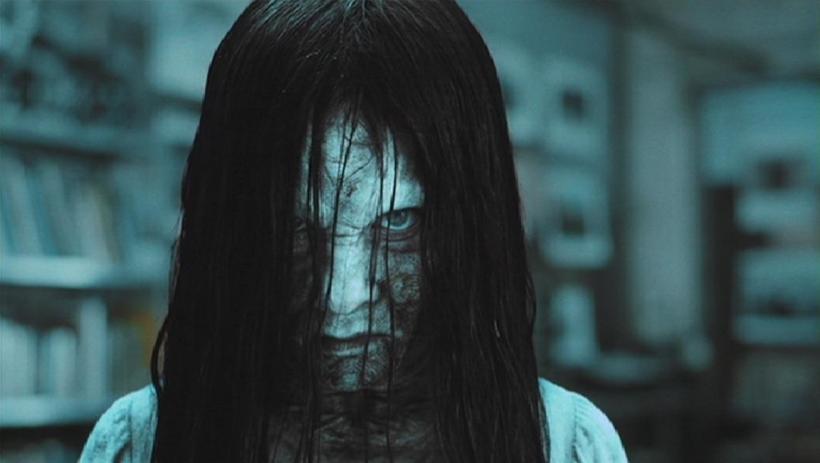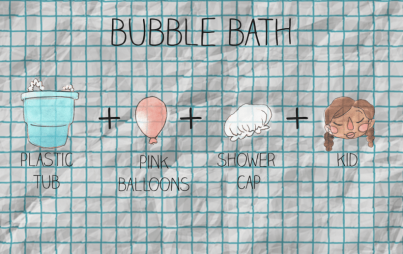
Credit: Facebook
Halloween is upon us, which means you’ve likely had your fill of the annual onslaught of "Yep, Horror Movies Still Suck For Women" articles. And they ain’t wrong—the history of horror is replete with psycho exes, damsels-in-distress, and women who are mere stepping stones on the path to gratuitous blood and gore.
However, there are a rare few films that showcase rich, resourceful, well-rounded characters—characters who don’t always use their feminine wiles for good. From cold-blooded killers to no-holds-barred heroines, here’s a look back at our favorite female horror characters of the modern age.
Disclaimer: Horror is a genre with a vast underground, so we’ll stick to fairly well-known films to keep everyone happy.
BAD GALS
Ginger Fitzgerald, Ginger Snaps (Canada, 2000)
K, yeah, forget what I legit just said about keeping this familiar. Ginger Snaps’ release was unfortunately preceded by the Columbine shootings—not an opportune time to premiere a gory film, much of which takes place in a high school. But in the years that followed, it’s become legendary among fans for making the monster a teenage girl.
Ginger and Bridgette, two death-obsessed girls in a small town, have a pact that they’ll one day die together. They get more than they bargained for when Ginger gets attacked by a strange creature in the woods one night, and starts showing clear signs of lycanthropy. Though it bears many of the hallmarks of teen movies in the late ‘90s, it portrays the social grief of growing up an outcast with painful accuracy, and never once indulges in the ‘Teen girls are a nightmare, amirite?’ trope. I’m forever bummed I did not know about this at the time of its release—I was 13. This would have bumped The Craft right off its perch as a sleepover staple.
If you don’t mind Toyota ads every fifteen minutes, the whole thing is on Hulu right now.
Annie Wilkes, Misery (USA, 1990)
It’s not her maiming prowess that makes her so scary (though we still always, always look away during the wood block scene). It’s the fact that she is just cool as a cucumber through the whole thing. An adaptation of a Stephen King novel, Misery is the story of Paul Sheldon, a writer of cheap-but-popular paperbacks who gets into a car wreck during a snowstorm after finishing his latest work. Rescued by recluse Annie Wilkes, his self-proclaimed biggest fan, she takes him back to her isolated cabin to . . . nurse him back to health.
Misery was released in 1990, when horror was just coming off the ‘80s—a minefield of objectification for women in many genres. Misery is a refreshing, albeit chilling, reminder that men can be rendered helpless, wailing victims, too.
Asami Yamazaki, Audition (Japan, 1999)
We’ll admit, she doesn’t do much to combat the crazy-girlfriend stereotype. Still, you’d be hard-pressed to find a female character, from any culture, as cold, calculating, and downright diabolical as Asami Yamazaki. Years after his wife’s death, Shigeharu is urged by his son to start dating again. His friend comes up with the, uh, brilliant idea to put together a “casting call” for potential mates for Shigeharu. One of them, Asami, stands out among all the rest, and though there are a few things amiss about her personality, he pursues her. In a plot line where she could have gone full Fatal Attraction, she instead enacts some of the most horrific acts of torture ever committed to film in the most measured of ways, which might be the scariest thing of all. Audition is equal parts art-house film and total nightmare fuel.
Samara, The Ring (USA, 2002)
Little kids in horror had long been scary just by, well, being. But then, finally, there was a girl who was at least given something to do. I’m sure you all snuck into the movies to see this in middle school, but here’s the plot anyway: Journalist Rachel Keller’s young niece dies mysteriously, and is asked by her sister to put her investigative skills to work and find out how her daughter died. In her research, Keller finds a tape connected to several more mysterious teen deaths. On the tape is the image of a little girl with a twisted backstory who turns out to, uh, be the embodiment of evil, and will kill you if you so much as look at her—and by the time you do, it's already too late. Oops.
Based on the just-as-scary-if-not-scarier Japanese version, Ringu, The Ring was an instant classic. I’m not sure how much longer it can go before seeming dated—the plot does hinge on a cursed videotape, after all—but it ushered in a new generation of mainstream horror, thanks to a decently-developed villain.
The Alien Queen, Aliens (USA, 1986)
Hey, I never said these had to be human. The Alien Queen is the mother of all movie monsters . . . literally. You’ll read more about Ellen Ripley below, but in the Alien sequel, Aliens (with an s), she comes face-to-face with an Alien Queen, the creature from which all chest-bursting, face-hugging alien life springs. Alien as a franchise has always toed the line between sci-fi and horror, and with Aliens they had definitely crossed over into textbook sci-fi. Still, even today, it’s still rare to find a monster that’s largely suggested to be female.
GUTSY HEROINES
Clarice Starling, The Silence of the Lambs (USA, 1990)
Granted, this film straddles the line between thriller and horror, but there’s definitely enough blood to slide it over the edge to horror if the case needs to be made. Based on the Thomas Harris bestseller, The Silence of the Lambs revolves around Clarice Starling, an agent-in-training at Quantico, who is assigned to crack Hannibal Lecter, a convicted, um, cannibal who harbors crucial information about a practicing serial killer. She stumbles, she’s unsure of herself, but you can see her find her place as a kickass heroine for the ages in that tense-as-fuck night-vision chase near the end.
Ellen Ripley, Alien (USA, 1979)
Ellen Ripley is the final word on strong female leads and a perennial favorite for cosplayers, likely because she comes out swinging in the first movie in the Alien franchise. When her ship is invaded by a malignant alien species, Officer Ellen Ripley makes it clear from the get-go that she would not be a cowering, hand-wringing victim—and three movies later, she never was. A rare horror survivor—and an even rarer female one.
Mia, Evil Dead (USA, 2013)
Surprise! Bet you didn’t see this one coming. While the unnecessary-but-not-awful revisiting of Evil Dead was mostly unremarkable, it does take a pleasant twist at the end—as pleasant a twist as a movie about a haunted cabin can, anyway. While it strips the original of its camp, it instead puts the power in the chainsaw-addled hands (uh, spoiler alert) of its female lead instead predictably passing power over to a lantern-jawed hero.
Selena, 28 Days Later (UK, 2002)
While she plays second banana to jawline-on-a-torso Cillian Murphy, Selena’s an important step in horror-movie heroine-ism. After waking up from a coma, Jim emerges from a London hospital to find the city deserted and in ruins. He meets Selena and Mark, two survivors who take him in and tell him that a mysterious virus has run rampant on the city, turning its denizens into a breed of crazed, maniacal zombies. Selena shows no mercy when it comes to the infected, and serves as Jim’s guide to his grim new reality. By the end of the film, she’s survived not only the virus, but the traumatic infection of two trusted friends and attempted sexual slavery.
The (Human) Cast of The Descent (UK, 2005)
You didn’t think we’d ignore this one, did you? As far as I know, The Descent is first somewhat-mainstream horror film to feature only women, and the only to be set in a cave. In The Descent, five women, all experienced cave explorers, set out to spelunk a partially-mapped system in North Carolina. I don’t want to spoil anything else, so I’ll just say that caves are fucking dark.
The Descent not only succeeded at crossing unspoken social boundaries, it's widely considered one of the best horror films of the new millennium. But, like any truly good film, you won’t spend your first viewing of it thinking about its groundbreaking characters or place in the pantheon of horror—all you’re thinking about how they need to get out of this goddamned cave.
BOTH
Carrie, Carrie (1976/2013)
Angela Wattercutter breaks it down beautifully here.
Any more great ladies of horror we should know about? Tell us in the comments.





